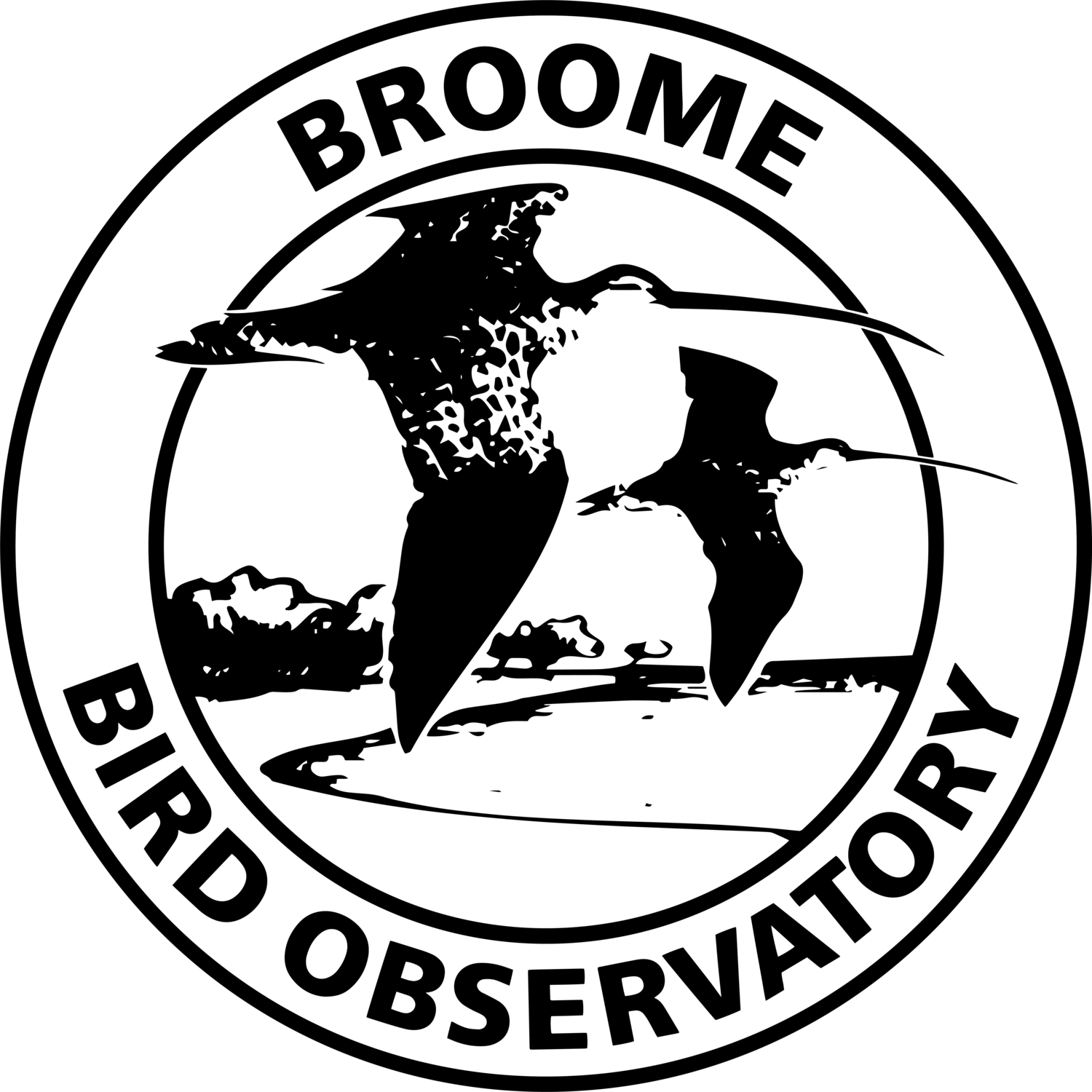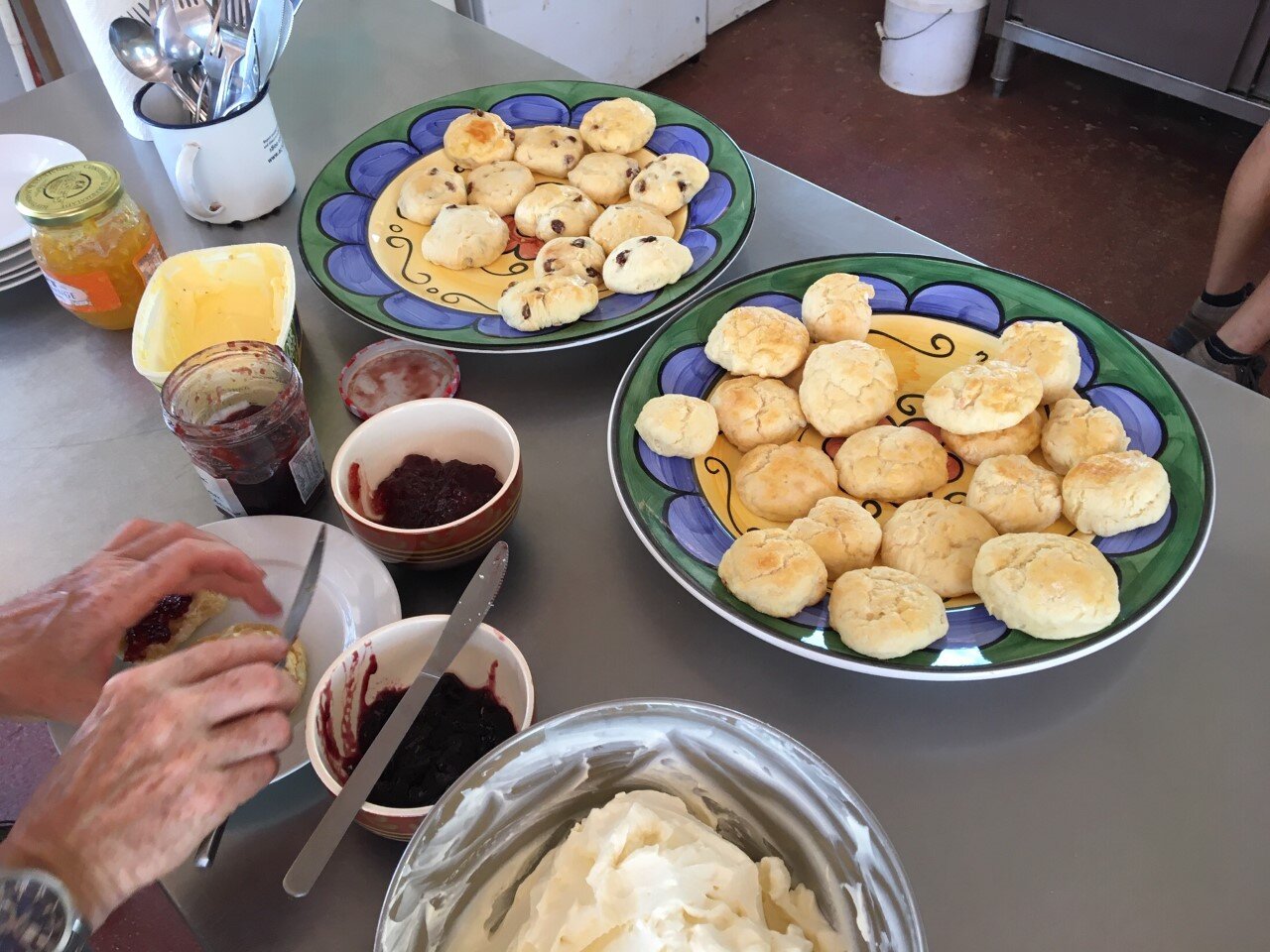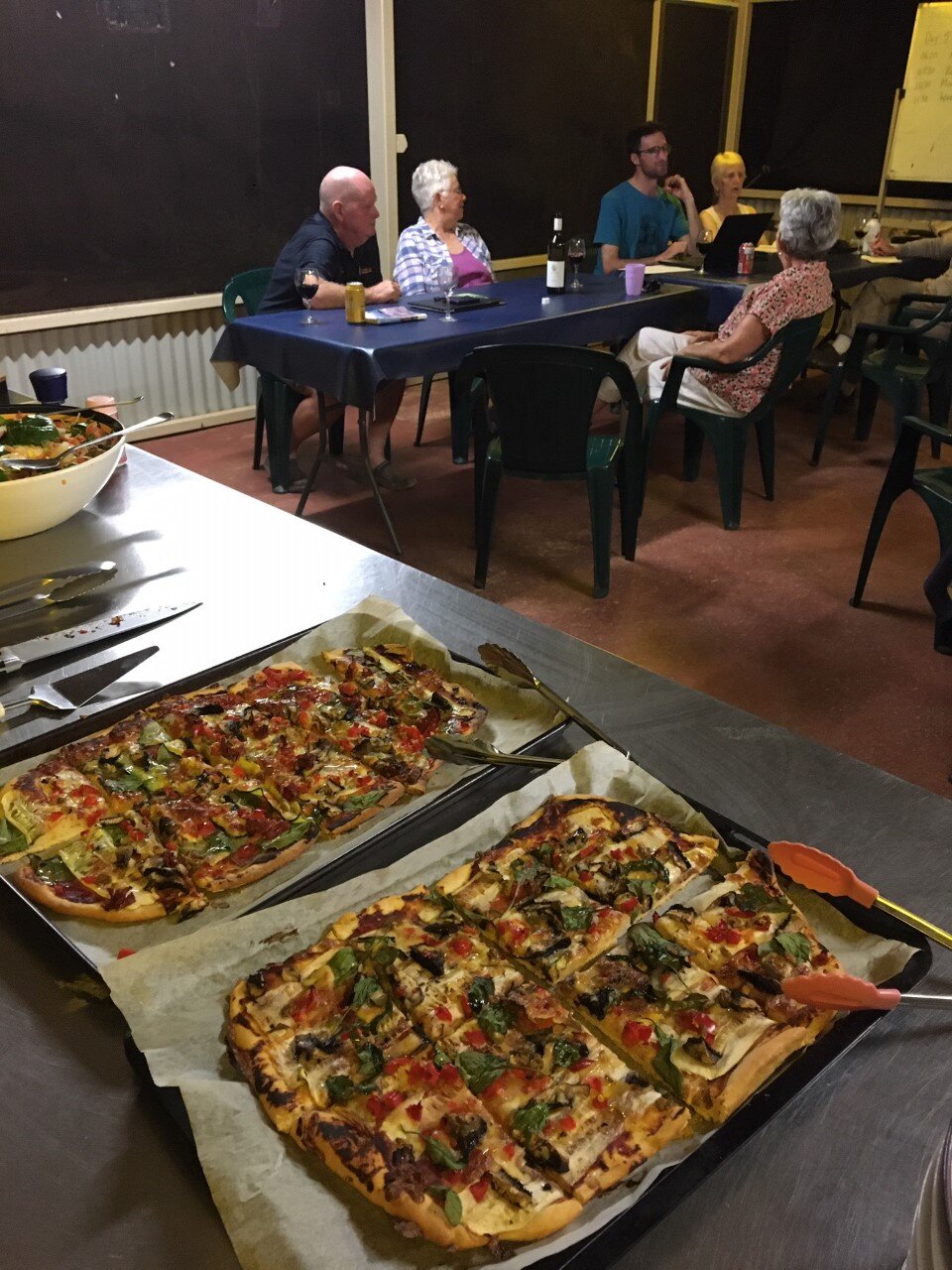September Course Highlights
The time of year that the shorebirds are returning and the cuckoos are calling is also the time of year that we run our 5-day Birds of the Broome Region courses.
Fortunately, the Covid situation here is such that we are still able to run them – a relief after we had to cancel our Wave the Waders Goodbye course in April due to the nationwide lock-down.
(Our Birds of the Broome region courses are similar to our migration-focused Wave the Waders Goodbye courses at the start of the year but with less of a shorebird focus and more of a general focus on the overall incredible diversity and abundance of birds that live in the Broome region.)
We’ve just finished our September course which, as usual, was jam-packed with birding and great food.
Guests had a go at ‘digi-scoping’ - using their phones to take photos through the ‘scopes.
Due to Covid border restrictions, the course had a very different dynamic than previous ones because we couldn’t have our usual mix of those from the eastern states.Fortunately, our West Aussie birders stepped up and we had a comfortable six guests on the course, all hailing from Western Australia (mostly in and around the Perth metropolitan).
This gave us a great opportunity to show the ‘southerners’ both the birds and landscapes that we ‘northerners’ get to enjoy on a regular basis.
Having a Broad-billed Flycatcher appear at our Shadehouse birdbaths practically the moment our first course guest arrived (the day before our course commenced) got things off to a very good start. Broad-billed Flycatchers occasionally appear around the BBO but hadn’t so far this year.
A Yellow-tinted Honeyeater, a very infrequent visitor to BBO, also made an appearance around the grounds during the course.
The actual course kicked off on Monday with an introductory lunch in traditional Aussie-style of BBQ beef burgers cooked in the sizzling heat by campground host Larry.
Once we’d added some salad and run through the introductions (some staff have hard-to-pronounce names and two guests shared the same name), we enjoyed our lunch in the Shadehouse while witnessing the antics of bathing finches, honeyeaters and bowerbirds.
Then it was off to the air-conditioned Mud-lab-turned-presentation-room for the Wardens’ welcome and a presentation on how birds make a living in the Broome region.
One of the shorebird flocks the guests got to see on our Birds of the Broome Region course last week.
Later in the afternoon, when it had started to cool down and the light was getting softer, we took the guests on a Yellow Chat Twitch, looking for the rare little bright yellow bird that lives amongst the samphire on the saltmarsh of Roebuck Plains.
The final destination took slightly longer to reach than planned due to us first diverting to admire a pair of Tawny Frogmouths doing their best to look like tree branches, being distracted by a gorgeous male Red-backed Fairywren in full breeding plumage, stopping to spot the Horsfield’s Bushlarks calling and doing display flights high overhead, and back-tracking to find a guest’s phone after it was found missing and presumed to have fallen out of her pocket while disembarking from the vehicle to look at the aforementioned fairywren.
Phone found and destination reached, everyone got to see a Yellow Chat and the beautiful sunset on the plains, with the surprise appearance of a few clouds. This was also the guests’ first opportunity to try out the spotting ‘scopes.
The day ended with homemade lasagne and orange polenta cake inspired by the Mediterranean/ Black Sea Flyway. A common theme with all our meals, particularly the evening ones, was for each night to represent a different flyway. And with eight different flyways to choose from, this makes for some creative and varied meals.
All eyes are fixed on the mass of small grey shorebirds on the left of the photo.
Day Two was all about shorebirds with both morning birding sessions spent along Roebuck Bay looking at shorebirds and learning their identifying features. Here, our guests saw a range of shorebirds including the elegant Red-necked Avocets, got to practise using the spotting ‘scopes, were shown the differences between Red Knots and Great Knots and were treated to a Wedge-tailed Eagle flying past, an occasional visitor to the bay.
The Broome region is home to 55 different species of shorebird and we saw 32 of those during the course.
Post-lunch entertainment-slash-education was a presentation on tricky-to-identify species which gave guests some useful mnemonics to remember. One of which was, “A Whimbrel’s bill can reach to scratch its back but an Eastern Curlew’s bill can reach to scratch its bum”.
Exploring the wetlands behind Willie Creek, north of Broome.
Then it was off to wetlands behind Willie Creek where guests got their first glimpses of Black-necked Stork and Golden-headed Cisticola and got to put their shorebird ID skills to the test with Sharp-tailed, Wood, Marsh and Curlew Sandpipers, among others.
A male White-breasted Whistler made an appearance as soon as we got out of the cars.
It’s a bit muddy in the mangroves!
Day Three began with an early morning trek through the mangroves which started smashingly with brilliant views of a male White-breasted Whistler as soon as we got out of the cars.
The mangroves were abuzz with lots of Mangrove Grey Fantails, Broad-billed Flycatchers and White-breasted Whistlers with guests also getting views of White-breasted Woodswallows, Striated Herons, Sacred Kingfishers and a male Mangrove Golden Whistler, as well as two Black-necked Storks on the return journey.
After returning to the BBO for a second-breakfast of pancakes, it was off to the bay again for the final session of shore-birding.
Guests got to see a White-throated Gerygone during the shore-birding session - usually we hear them more than we see them! Photo: Larry O’Brien
While the weather was hot, guests were rewarded with a smorgasbord of shorebirds including Oriental Plover, Little Curlew, Broad-billed Sandpiper and a juvenile Asian Dowitcher.
The presentation following lunch this day looked at how bird-watchers can contribute to research by reporting their sightings through Birdata, eBird and various Citizen Science projects.
The evening’s outing visited the Dampier Creek saltmarsh where Oriental Plovers, Brown Songlarks and Cattle Egrets were key features.
Standing in the shade while observing sandpipers, Australian Pratincoles and Brolgas at Lake Eda.
A couple of Black-breasted Buzzards flew over just as we were leaving Lake Campion.
Day Four took guests to the rain-fed lakes of Roebuck Plains with morning tea spent at Lake Campion watching Wood Sandpipers and Black-fronted and Red-kneed Dotterels (with an appearance of Black-breasted Buzzards as we were leaving) and lunch spent watching more than 900 Brolgas and scores of Australian Pratincoles on the shores of Lake Eda.
Other treats during this trip were a Spotted Harrier coming in for a drink at Taylor’s Lagoon, an Australian Hobby swiftly chasing Diamond Doves at the same spot and a Little Woodswallow perched beside the road on the journey home.
This Little Woodswallow stayed still long enough for us to all get out of the cars and see it.
Our final night ended with home-made pizza (from the Mediterranean/Black Sea Flyway - yes we doubled-up on this flyway!) and a range of desserts.
Day Five returned guests to Broome via the best bird-watching spots in Broome, those being Streeter’s Jetty, where they got crippling views of Red-headed Honeyeaters, the sewage works (disappointingly and uncharacteristically devoid of Plumed Whistling-Ducks), Entrance Point and the Roebuck Bay Lookout at the end of Dampier Terrace, where the course ended with a final morning tea and with a final tally of 139 bird species observed during the course.
We really had a blast running this course and, by the sounds of it, our guests did too!
We really loved sharing our birds and ‘backyard’ with those who came on the course.
One interesting note – of the two courses we’ve managed to run this year (instead of our usual four), one guest came for both courses (how keen is he?!) and we’ve had a Broome local on each of these courses.
At this point, I’d really like to thank our volunteers for all their stellar efforts, including the campground hosts who kept everything clean and tidy and Covid-safe, among numerous other things.
If anyone reading this is interested in a course, we’ve still got spaces on our October course from the 13th to 17th of October and we’ve just announced our dates for next year’s Wave the Waders Goodbye courses in March and April so check them out here. Soon we will announce our dates for next year’s Birds of the Broome Region courses.
In the meantime, whether you have access to a balcony, backyard, front yard, park or vast expanse of land, make sure you take the time to enjoy the marvellous wonder of birds, wherever you are!
- Mattea















